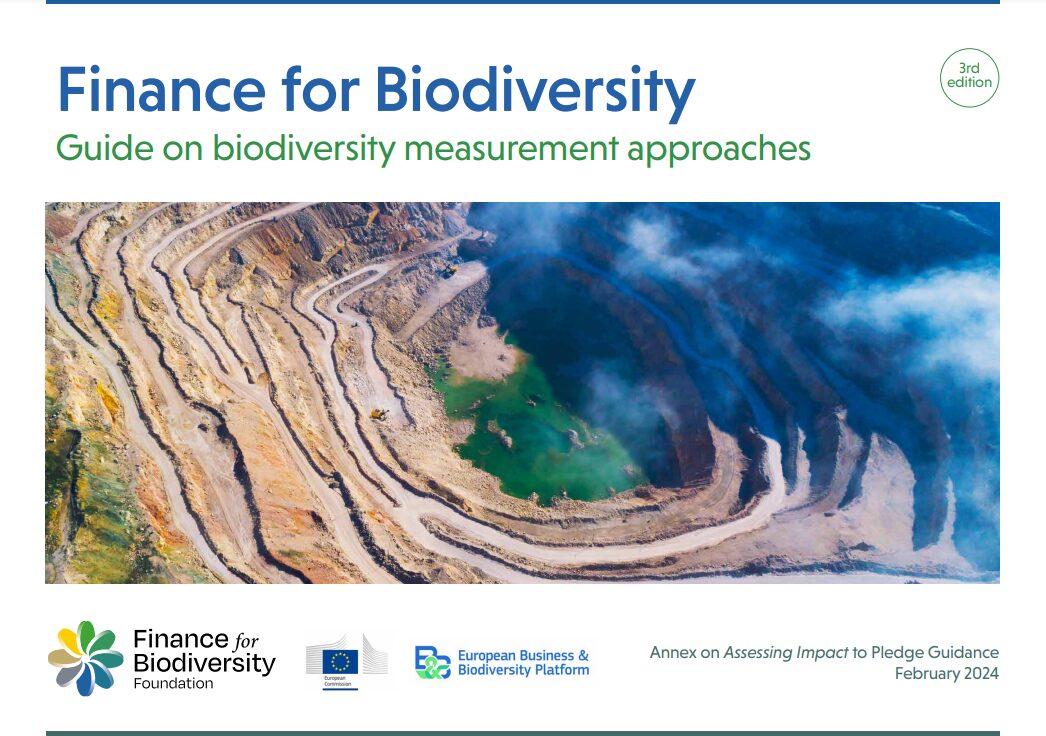Third Update of the ‘Guide on Biodiversity Measurement Approaches’
February 19, 2024
The third edition of the ‘Guide on Biodiversity Measurement Approaches’ has been released. This comprehensive guide was developed by the EU Business & Biodiversity Platform and the Finance for Biodiversity (FfB) Foundation.
Expanding on the work laid by its previous editions, the Guide’s third edition offers information and assistance to financial institutions in understanding the existing approaches for measuring their interactions with biodiversity.
What’s new in the third edition?
The following are the new elements of the third edition:
- Two new tools included Nature and Biodiversity Metrics (MSCI) and Biodiversity Impact Assessment Tool (ISS ESG).
- New categorisation of tools following current frameworks, such as the TNFD LEAP approach.
- Updated description, details and links for all tools, including TNFD reporting suitability.
- Update of the ‘Biodiversity data types and sources’ section.
Overview of nine biodiversity measurement tools
The Guide provides a comprehensive overview of nine tools, categorised into three distinct groups, for measuring the interactions of financial institutions with biodiversity:
Sector screening approaches:
- ENCORE – Exploring Natural Capital Opportunities, Risks and Exposure (UNEP-WCMC, UNEP FI & NCFA)
Location screening approaches:
- IBAT – Integrated Biodiversity Assessment Tool (BirdLife International, Conservation International, IUCN, UNEP-WCMC)
- NBM – Nature and Biodiversity Metrics (MSCI)
Dependencies & impacts assessment:
- BFFI – Biodiversity Footprint Financial Institutions (CREM and PRé Sustainability, together with ASN Bank)
- BIAT – Biodiversity Impact Assessment Tool (ISS ESG)
- BIA-GBS – Biodiversity Impact Analytics powered by the Global Biodiversity Score (Carbon4Finance and CDC Biodiversité)
- CBF – Corporate Biodiversity Footprint (Iceberg Datalab and I Care Consult as scientific partner)
- GBSFI – Global Biodiversity Score for Financial Institutions (CDC Biodiversité)
- GID – Global Impact Database, Biodiversity Impact Data (Impact Institute)
The Guide emphasises the suitability of each tool for specific organisational focus areas, business applications, and asset categories while outlining their respective strengths and limitations. Additionally, it provides detailed information on each tool’s data and resource requirements, along with insights into the scopes and pressures covered.
Measuring biodiversity impact is an important step for financial institutions
As biodiversity loss becomes an ever more urgent challenge, financial institutions are looking for ways to quantify the impacts and dependencies of their finance and investment activities on biodiversity. Therefore, assessing impact is one of the five commitments of the Finance for Biodiversity Pledge. This Guide serves as an Annex to the Assessing Impact section of the Pledge’s main Guidance Document.
A Guide built on several sources
The ‘Guide on biodiversity measurement approaches’ format builds on the series of reports entitled Assessment of biodiversity measurement approaches, developed by the Methods Workstream of the EU Business Biodiversity Platform, and compiles the information most relevant to financial institutions. The Finance workstream together with the FfB Foundation made the information accessible for financial institutions by the way the Guide is structured.
Deliverables:
The maturity level and updates of these tools, as well as new tools available in the market, will be updated yearly as part of coming editions of this Guide.
